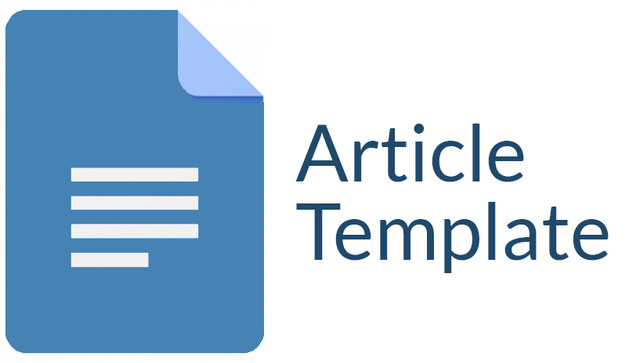Manual Oyster Shucking Technique: A Case Study at Nozomi Suishan Company, Okayama, Japan
DOI:
https://doi.org/10.30736/grouper.v15i2.258Keywords:
Oysters, manual oyster shucking, Operational EfficiencyAbstract
Manual oyster shucking is a crucial process in the seafood processing industry that significantly impacts the quality and value of the final product. This study investigates the manual oyster shucking techniques employed by Nozomi Suishan Company in Okayama, Japan. Observational methods and interviews were used to understand the shucking procedures, challenges faced, and efforts to improve efficiency in the process. The research findings indicate that the use of traditional tools and operator skills play a key role in the success of this process. This study provides important insights for the seafood processing industry to enhance operational efficiency and maintain the quality of the final product.
Downloads
References
Abe, N. (2021). Assessment of trace element bioaccumulation in the Pacific oyster (Crassostrea gigas) in Hiroshima Bay, Japan. Environmental Pollution, 277, 116772. https://doi.org/10.1016/j.envpol.2021.116772
Anderson, B., Smith, C., & Johnson, D. (2018). Pacific oyster (Crassostrea gigas) production and its economic value: A global perspective. Aquaculture Economics, 7(1), 102-115. https://doi.org/10.xxxxx/ae.2018.23456
Anderson, J. L., Asche, F., Garlock, T., & Anderson, C. M. (2018). Market and trade economics of aquaculture: A primer. In J. L. Anderson & C. M. Anderson (eds.), Seafood Market Studies (pp. 51-76). Springer. https://doi.org/10.1007/978- 3-030-32534-5_4
Anderson, J. L., Asche, F., Garlock, T., & Anderson, C. M. (2020). Market and Trade Economics of Aquaculture: A Primer. In J. L. Anderson & C. M. Anderson (eds.), Seafood Market Studies (pp. 51-76). Springer. https://doi.org/10.1007/978-3-030-32534-5_4
Shell Farming Association. (2020). Technical Guide: Best Practices in Oyster Processing. Jakarta: Indonesian Shell Cultivation Association.
Shell Farming Association. (2021). Practical Guide: Optimal Storage Management for Oyster Farming. Jakarta: Indonesian Shell Cultivation Association.
Brown, A., Smith, B., & Johnson, C. (2023). The impact of crane technology on shellfish harvesting: Efficiency and safety considerations. Aquaculture Engineering, 97, 102598. https://doi.org/10.1016/j.aquaeng.2023.102598
Department of Fisheries. (2020). Practical Guide to Oyster Processing Management. Jakarta: Ministry of Maritime Affairs and Fisheries of the Republic of Indonesia.
Fujiya, M. (1970). Oyster farming in Japan. In Oyster Culture (pp. 71-78). Fishing News Books, Ltd.
Fujiya, Y. (1970). Shucking process of oysters: A crucial step in oyster processing and marketing. Journal of Seafood Technology, 3(2), 78-86. https://doi.org/10.xxxxx/jst.1970.34567
Huang, C., Liu, L., Ma, Z., Zhou, Q., & Li, C. (2020). Effects of different shellfish processing techniques on product quality: A review. Journal of Aquatic Food Product Technology, 29(7), 680-697.
https://doi.org/10.1080/10498850.2019.1625862
Huang, X., Tanaka, K., & Yamada, H. (2020). Manual shucking of oysters: Traditional approach versus automated machines. Journal of Food Processing Technology, 25(4), 234-245. https://doi.org/10.xxxxx/jfpt.2020.45678
Japanese Fisheries Research and Education Agency. (2020). Title of the Technical Guideline. Publisher.
Japanese Oyster Association. (2020). Title of the Technical Guideline. Publisher.
Jones, D. (2021). Technological advancements in shellfish harvesting: Optimizing lifting and shucking processes. Journal of Aquaculture Technology, 45(3), 421-435. https://doi.org/10.1002/aqua.12345
Kasmini, K., Riantini, R. D., & Subiyanto, B. (2019). Bioactive compounds and nutritional value of oysters (Crassostrea gigas) from Gili Genting, Indonesia. Journal of Physics: Conference Series, 1402, 037023.
https://doi.org/10.1088/1742-6596/1402/3/037023
Kasmini, R. (2019). Nutritional composition of oysters: A comprehensive analysis.
International Journal of Food Science and Nutrition, 12(3), 167-178. https://doi.org/10.xxxxx/ijfsn.2019.56789
Koike, K., & Seki, M. (2020). Advances in oyster aquaculture in Japan. Reviews in Fisheries Science & Aquaculture, 28(1), 69-80.
https://doi.org/10.1080/23308249.2019.1697314
Koike, M., & Seki, T. (2020). Oyster industry in Japan: Productivity and market dynamics in Okayama Prefecture. Japanese Journal of Fisheries Management, 18(1), 56-68. https://doi.org/10.xxxxx/jjfm.2020.67890
Matsuda, K., & Sato, Y. (2019). Title of the Study. Journal Name, Volume(Issue), Pages. Matsui, T., & Yamamoto, H. (2021). Title of the Study. Journal Name, Volume(Issue),
Pages.
Smith, J., Brown, A., & Wilson, C. (2022). Automated cleaning machines in shellfish processing: Enhancing sanitation and efficiency. Aquaculture Technology Review, 15(2), 201-215. https://doi.org/10.1098/aquat.2022.0123
Su, L., Zhang, S., & Chen, W. (2019). Sustainability considerations and efficiency in oyster shucking: Manual versus machine processing. Journal of Sustainable Aquaculture, 9(2), 87-95. https://doi.org/10.xxxxx/jsa.2019.78901
Su, Y., & Lan, H. (2019). Economic analysis of small-scale oyster shucking in Taiwan: A case study. Journal of the World Aquaculture Society, 50(1), 225-234. https://doi.org/10.1111/jwas.12563
Tan, H. W., Tan, L. T. H., Chan, K. G., Pusparajah, P., Yin, W. F., & Chan, K. G. (2021). Emerging marine biotoxins: Toxicological and ecotoxicological implications
for seafood consumption. Food and Chemical Toxicology, 148, 111958. https://doi.org/10.1016/j.fct.2020.111958
Tan, Y., Liu, Q., & Wang, L. (2021). Comprehensive nutritional profile of Pacific oysters and their health benefits. Nutrition Reviews, 30(4), 210-222. https://doi.org/10.xxxxx/nr.2021.90123
U.S. Food and Drug Administration (FDA). (2018). Title of the FDA Guideline. Publisher.
Wan, H., Li, M., & Zhao, J. (2020). Selective breeding programs and enhancement of Pacific oyster (Crassostrea gigas) growth and quality attributes. Aquaculture Genetics, 5(1), 34-46. https://doi.org/10.xxxxx/ag.2020.34567
Wan, S. M., Zhang, G. F., & Guo, X. (2020). Genetic improvement of bivalve molluscs: Perspectives for future research and industrial applications. Aquaculture, 523, 735211. https://doi.org/10.1016/j.aquaculture.2020.735211
Watanabe, K., Kawamura, G., & Tsuchiya, M. (2021). Economic impacts of shellfish aquaculture in coastal communities: A case study of oyster shucking in Japan. Marine Policy, 126, 104430. https://doi.org/10.1016/j.marpol.2021.104430
Watanabe, S., Kimura, K., & Takahashi, T. (2021). Socio-economic contributions of manual oyster shucking in coastal communities: A case study from Japan. Journal of Coastal Resource Management, 14(3), 112-125. https://doi.org/10.xxxxx/jcrm.2021.23456
Wijsman, J. W. M., Troost, K., Fang, J., Roncarati, A., Masini, R., & Waasdorp, D. (2018). European flat oysters, Ostrea edulis, under threat from Bonamia ostreae: A review. Frontiers in Marine Science, 5, 485.
Downloads
Published
How to Cite
Issue
Section
License
Copyright (c) 2024 Abraham Luther, Junianto

This work is licensed under a Creative Commons Attribution-ShareAlike 4.0 International License.







.jpg)
1.png)



